How to Use Smart Personalization in Emails
年代mart personalization helps you create more effective campaigns. You can address subscribers by name, as well as customize the email text for individual cities or countries.
In this article, we'll show you how to set up email personalization in the subject and body of your email.
What is Personalization
Personalization involves including subscribers’ personal data into your emails to make them relevant to each user.
In the Brooks campaign example, emails are personalized using subscribers’ location.

什么是智能Personalization
年代mart personalization means including subscribers' personal information into your emails by certain criteria. Subscribers will receive different information based on the available data in your mailing list.
With SendPulse, you can use the following personalization criteria:
- empty (the variable has an empty value and contains no data);
- equal (the variable contains the exact value you will enter);
- not equal (the variable does not contain the exact value you will enter);
- contains (the variable contains a partial match to the value you will enter);
- 不包含(变量不包含吗partial match to the value you will enter);
- starts with (the variable contains the value you enter at the beginning of the variable);
- ends with (the variable contains the value you will enter at the end of the variable);
- more (the variable contains a value that is bigger than the number you enter);
- more or equal (the variable contains a value that is bigger than or equal to the entered number);
- less (the variable contains a value that is less than the entered number);
- less or equal (the variable contains a value that is bigger than or equal to the entered number).
服务支持体育彩票半岛IFandELSElogic when working with personalization criteria:
IFis used if the variable value matches the criterion;ELSEis used if the variable value does not match the criterion.
How to Use Smart Personalization
You can use smart personalization in the subject line and body of your email.
In the Email Subject Line
年代tart creating a campaign. In the "Information About Campaign" section, select the mailing list. After that, a variable selection button will become active in the “Subject line” field.
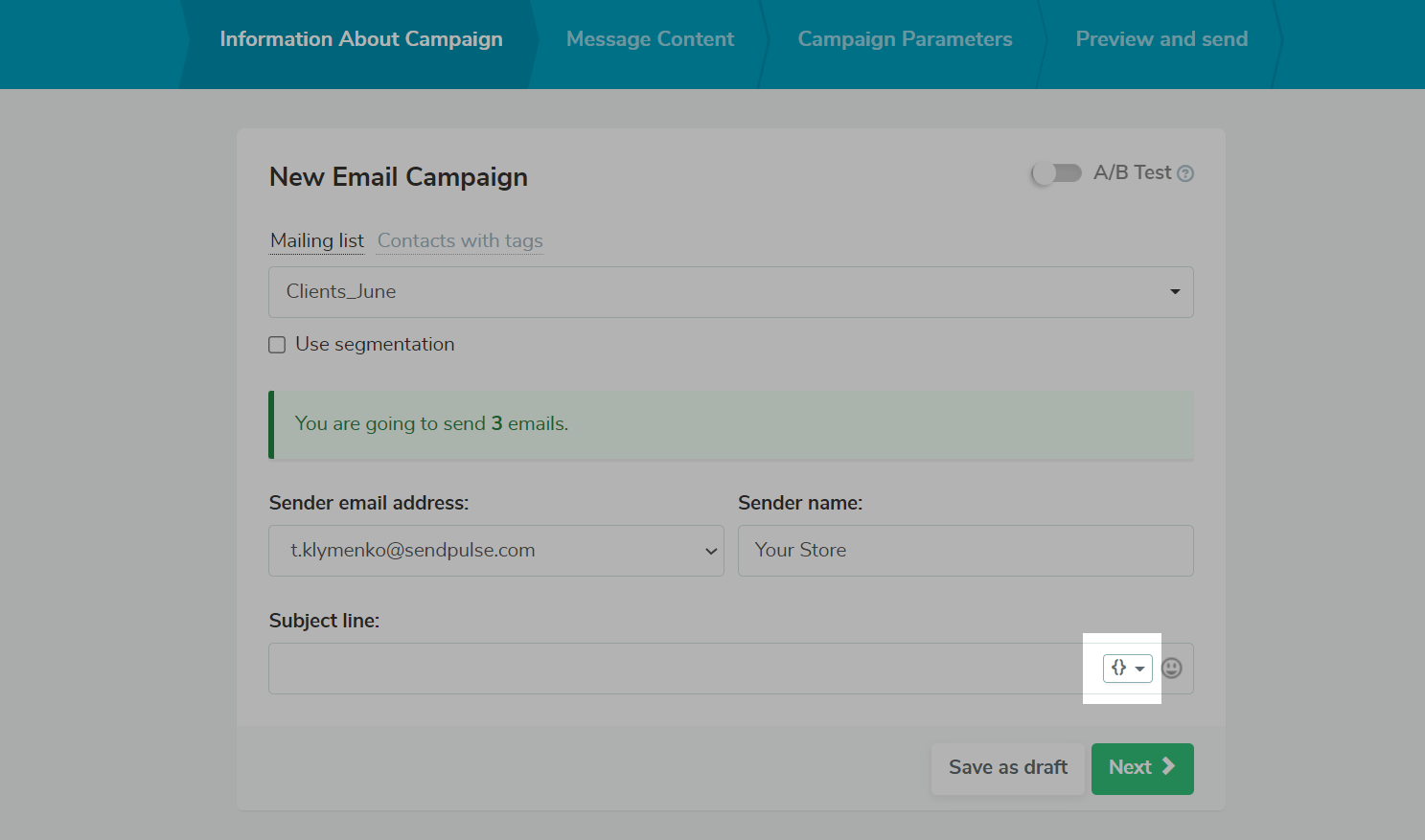
Click the variable selection button.
In the opened menu, go to the "Add criteria" tab.
年代elect the variable, and set the criterion using which the subject line will be personalized.
Example: if the value of the{{name}}variable is empty, use the ”Hi, we have a gift for you” text. Otherwise, use the ”{{name}}, we have a gift for you” text.
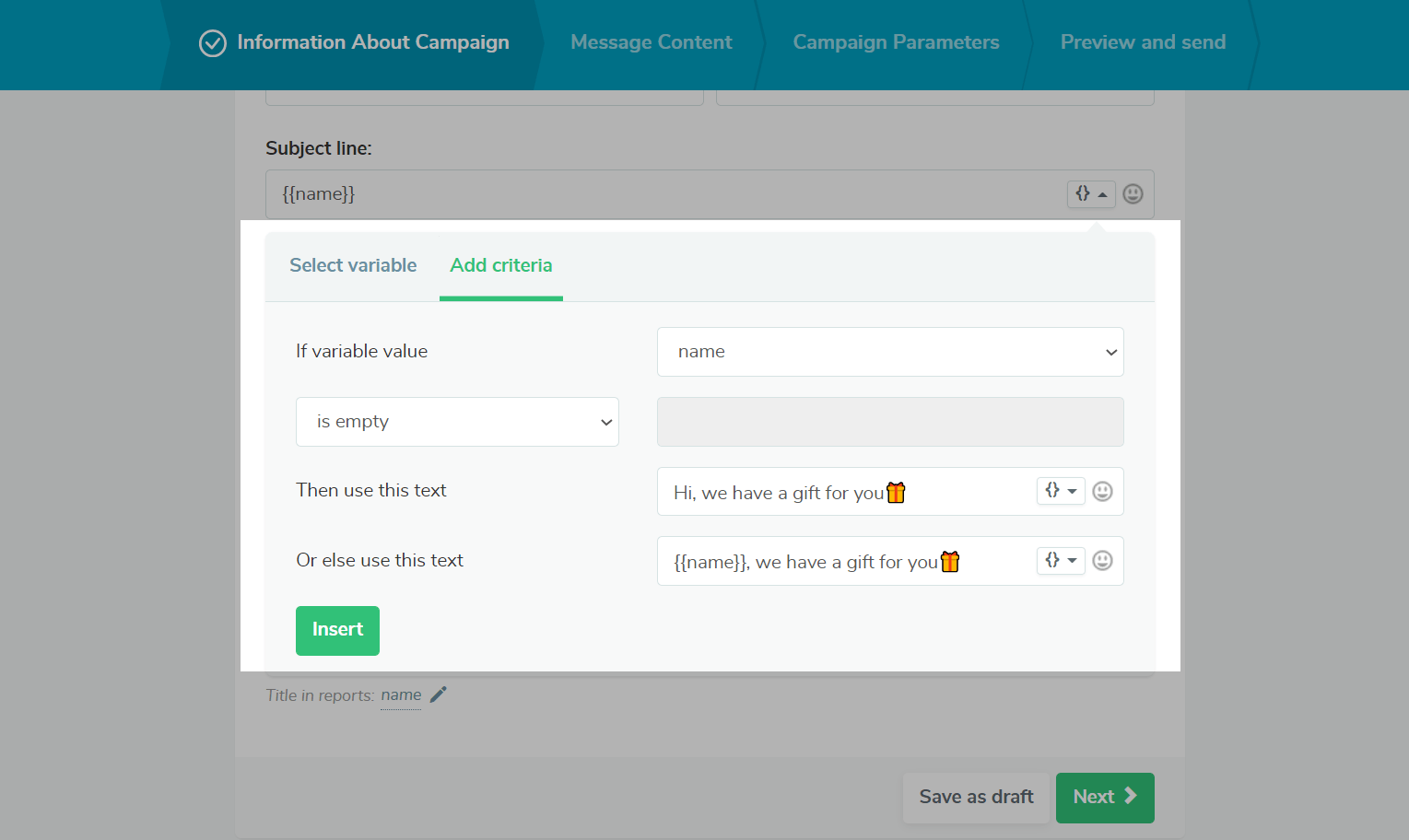
ClickInsertto save your settings.
If you use smart personalization in the subject line, you only need to insert the criterion itself in the subject line, which is not recommended to manually edit and add text.
If there is some data in the{{name}}variable, the subject line will look to your subscribers like this:
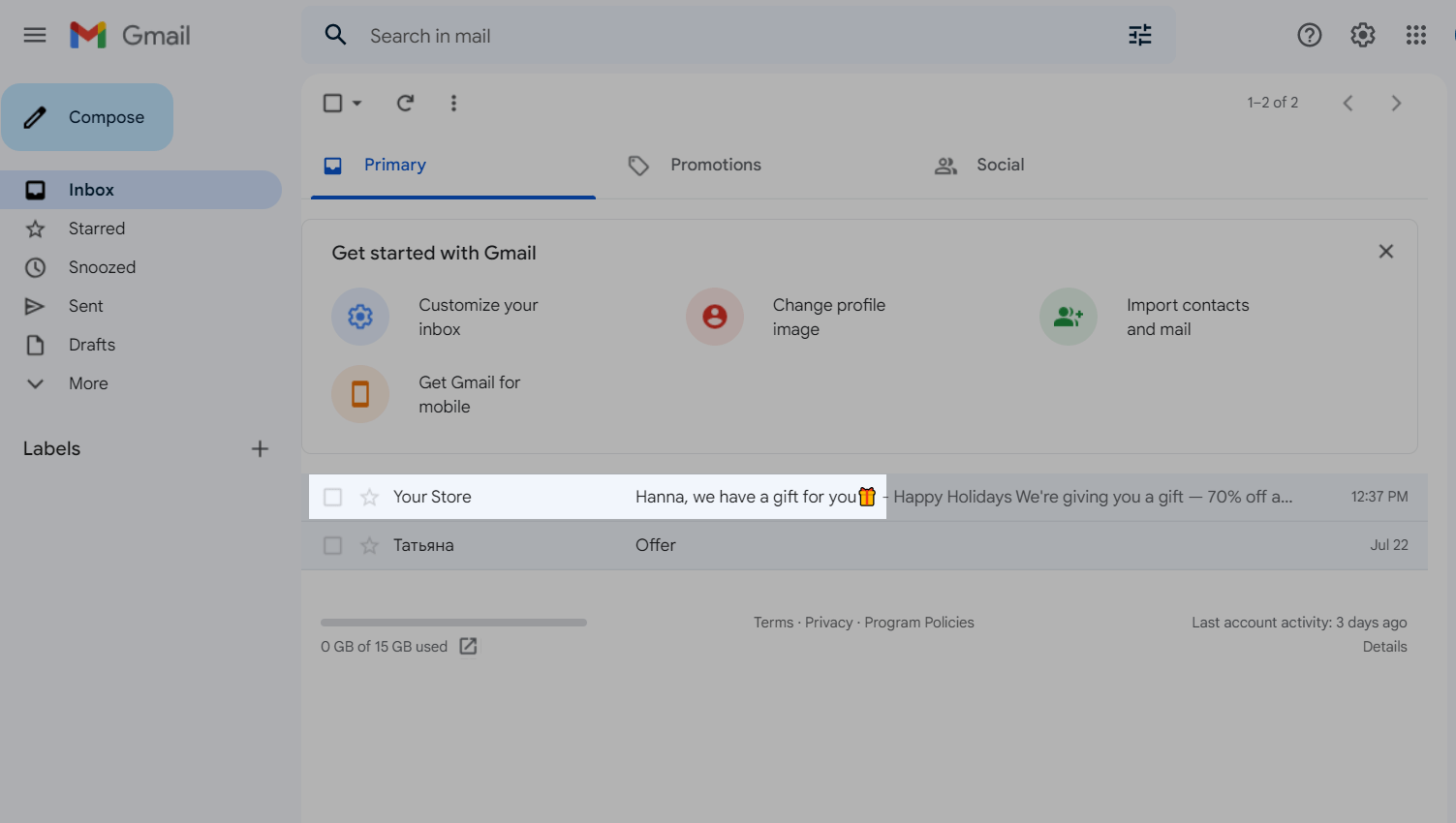
If there is no data in the{{name}}variable, the subject line will look to your subscribers like this:
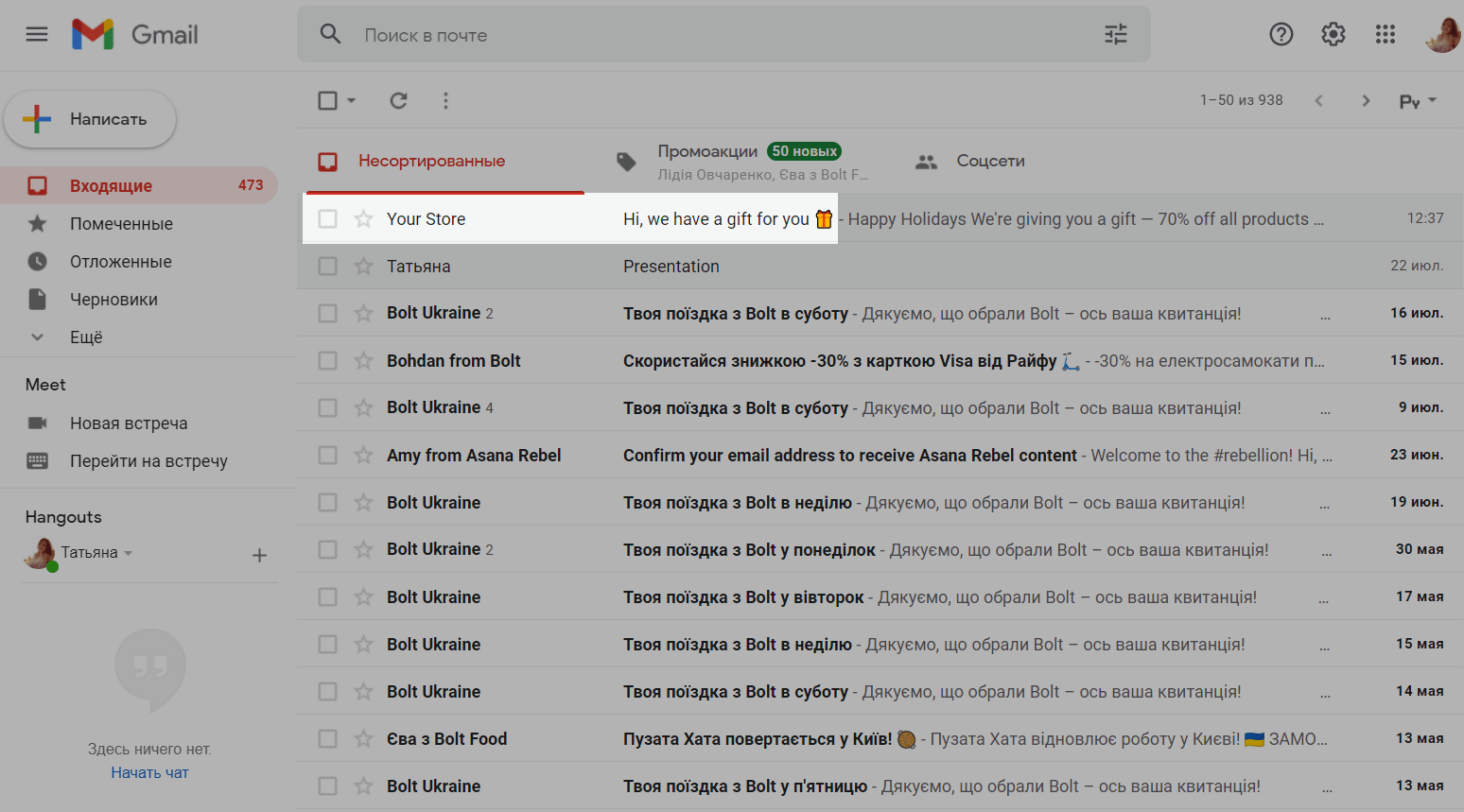
In the Email Body
You can add a criterion to the body of your email when you are creating the campaign. You can do this using ready-made templates or in the visual builder and the HTML editor.
Place the cursor in the required place in the template, and select theAdd criteriaoption in the toolbar.
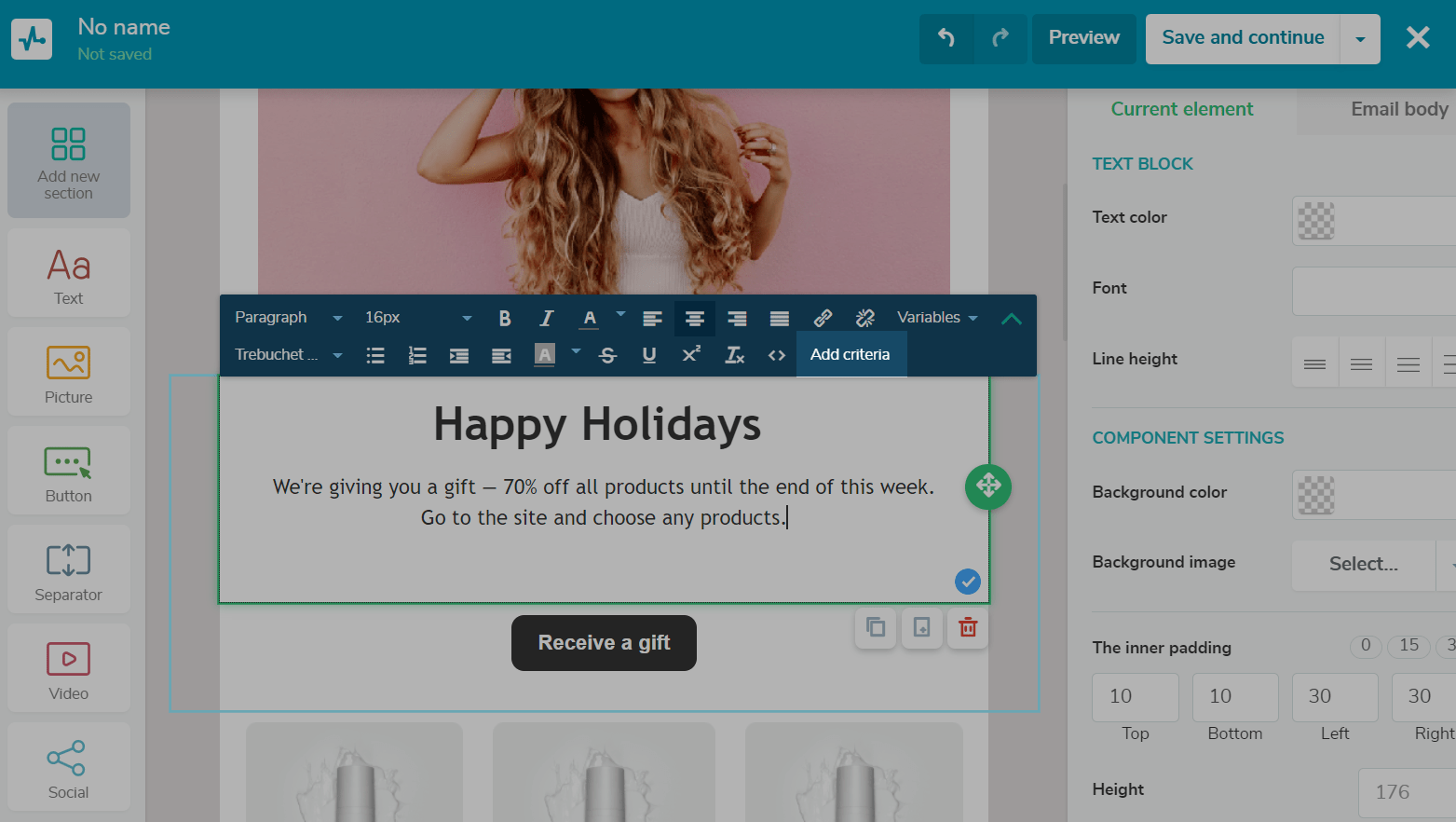
年代elect the variable, and set the criterion using which the email body will be personalized.
Example: if the value of the{{Location}}variable equals “Dublin,” send the “Delivery in Dublin is free” text. Otherwise, use the “Worldwide delivery” text.
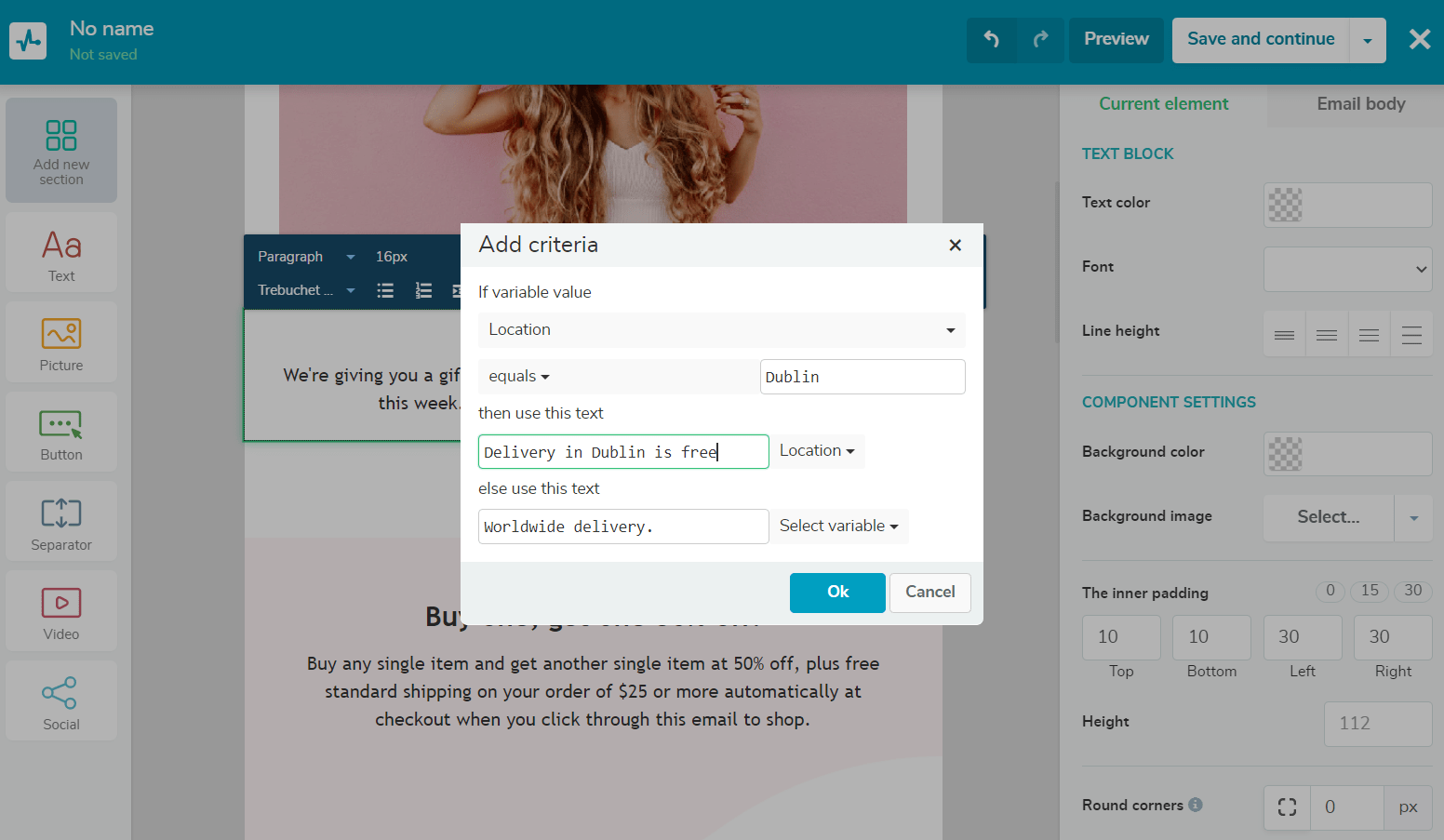
ClickOkto add the criterion to the email template.
年代ubscribers who have the value of the{{Location}}variable that equals “Dublin” will receive this email:
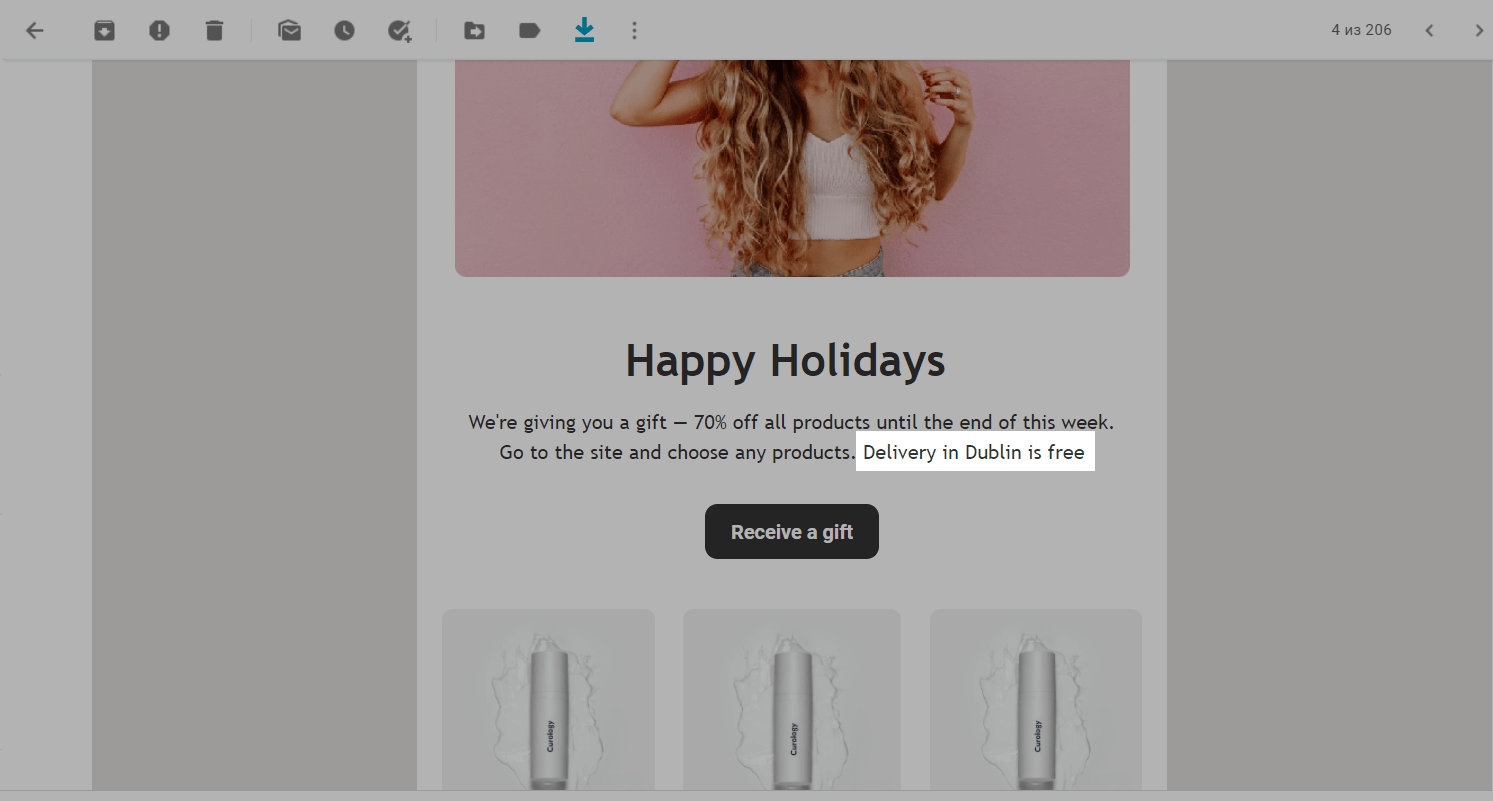
年代ubscribers who have any city other than Dublin in the{{Location}}variable or an empty value will receive your email with a different text:
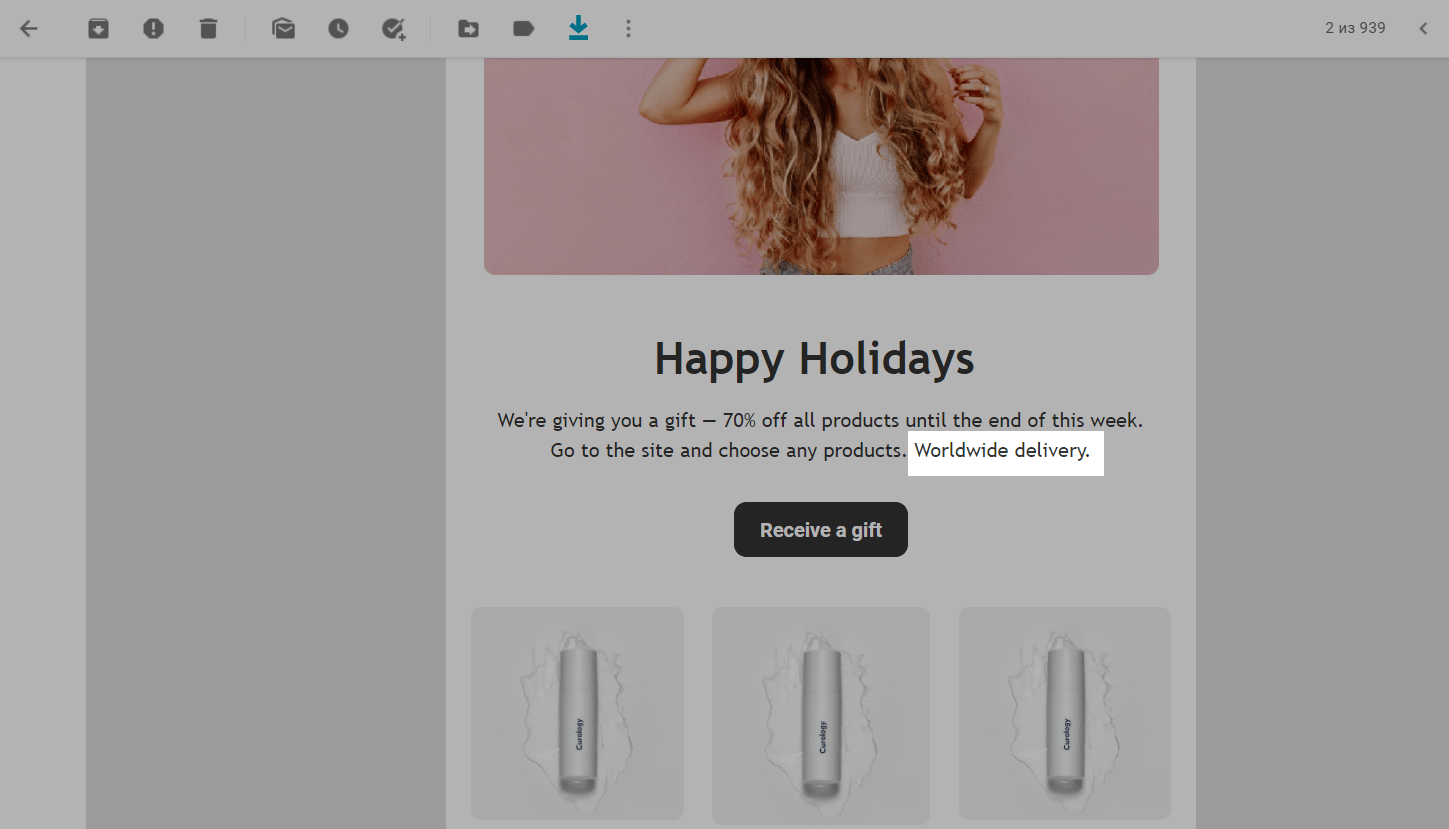
You can also include all the criteria in the email template manually, but it is important to do this correctly and not add extra spaces. You should also remember that variable names must be exactly the same as they are written in the mailing list using which you will send the campaign.
Examples of Smart Personalization
年代end Different Email Versions Based on Subscribers' Location
Offer different delivery options: in Paris and other cities.
|[IF:{{location}}=Paris]|Free delivery in Paris|[ELSE]|Worldwide delivery|[ENDIF]|Personalize Your Email Based on Gender
Take your subscribers’ gender into account when addressing them in your emails.
|[IF:{{gender}}=w]| {{name}}|[ELSE]|Mister {{name}}|[ENDIF]|Translate Your Emails for Subscribers from Different Countries
Display the email content in your subscribers' preferred language.
|[IF:{{language}}=en]| English text|[ELSE]|Polish text|[ENDIF]|Add Generalized Texts if Users’ Personal Data Is Missing
Include more generalized texts if some subscribers do not have values for a variable. So, for example, you could replace the{{name}}variable with "Friends" or other options if your subscribers’ names are unknown.
|[IF:{{name}}]|{{name}}, we have good news|[ELSE]|Friends, we have good news|[ENDIF]|Tailor Your Emails Based on Age/Date of Birth
年代end different email versions to users of different age groups.
|[IF:{{birthdate}}<=40]|The New Year is coming, and it's time to prepare presents for your children|[ELSE]|The New Year is coming, and it's time to prepare presents for your grandchildren|[ENDIF]|Create Dynamic Emails
To send a dynamic email to an entire list of recipients, you can insert your customization criteria into the tabular layout of the template.
TheIFpart should come before the opening<表>tag, and theENDIFpart needs to come after the closingtag.
|[IF:{{order}}=yes]| Text or media information for the cell
|[ELSE]| |[ENDIF]|This way, each subscriber will receive an email with different information based on the value of their contact variable.
When adding a table, you can insert blocks of substitute information betweenELSEandENDIF(if the variable value is not equal to the specified value, send this text). You can also add nothing betweenELSEandENDIF— this will allow you to simply hide or show the first block.
This method is an alternative to creating several templates for different recipient segments when sending bulk campaigns.
To send triggered emails, we recommend sending arrays via an event based on SendPulse’s ready-made templates. If you use these dynamic templates, SendPulse adds the required number of cells with information for each recipient based on the selected products.
Come up with the best personalization tactics for your business using your subscriber data, and increase the effectiveness of your campaigns.
Last Updated:22.02.2023
年代ign up with
年代ign in with Facebook 年代ign in with Google